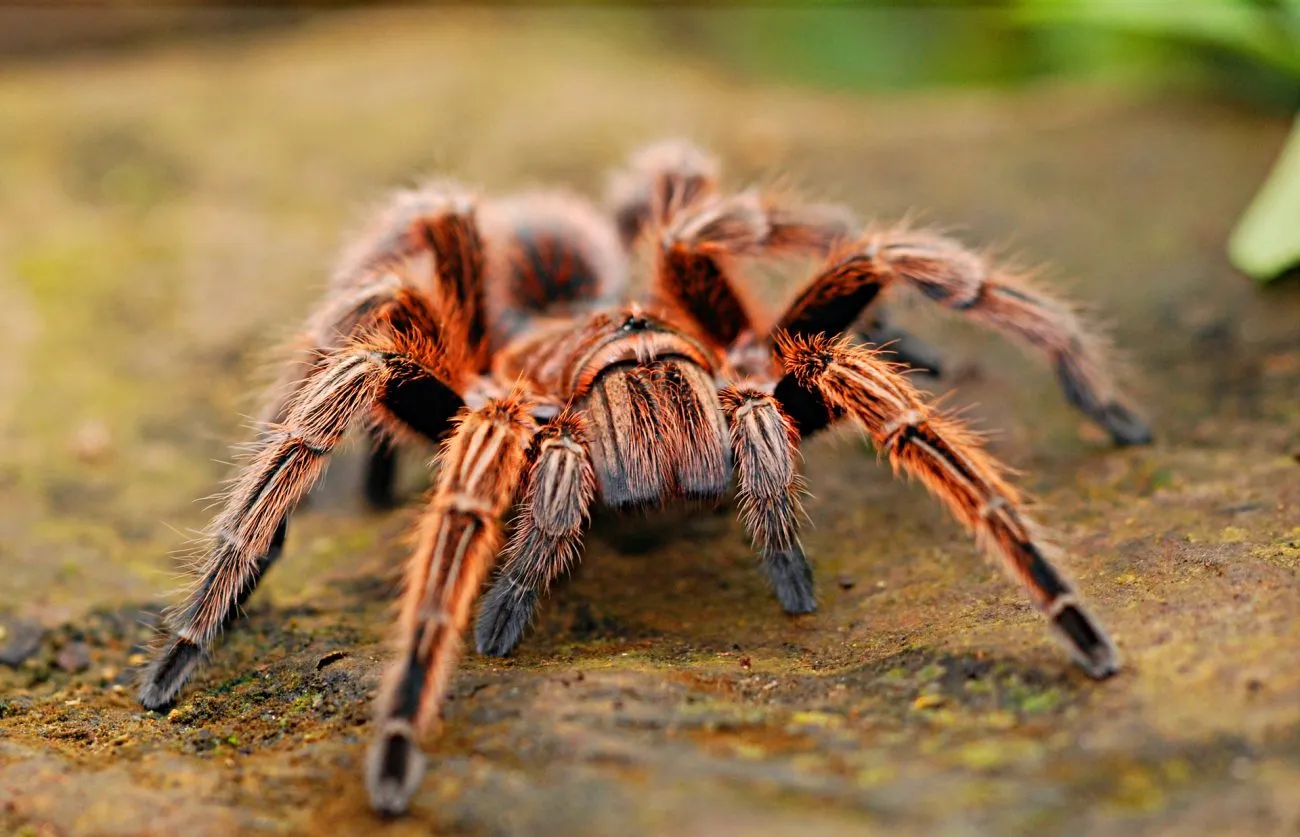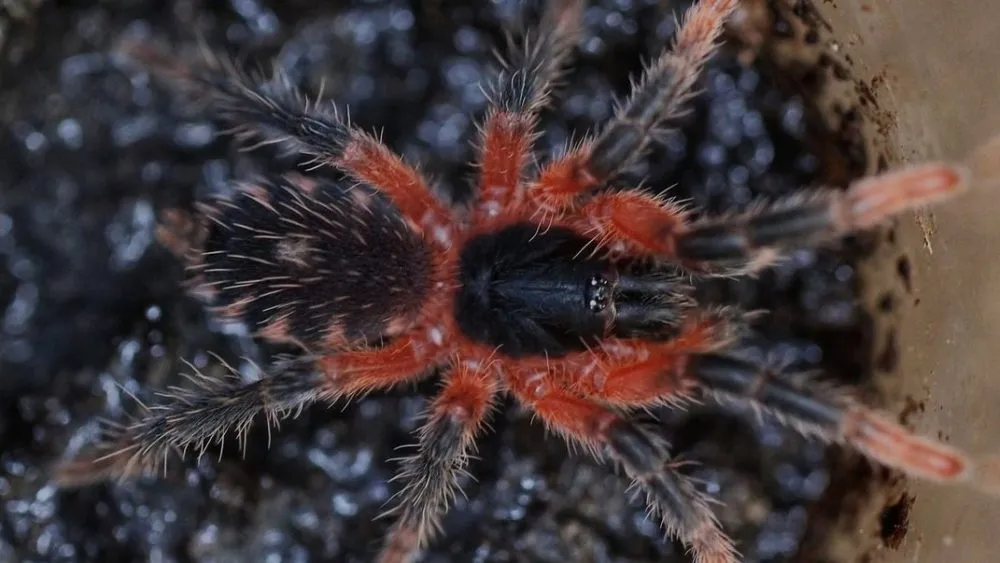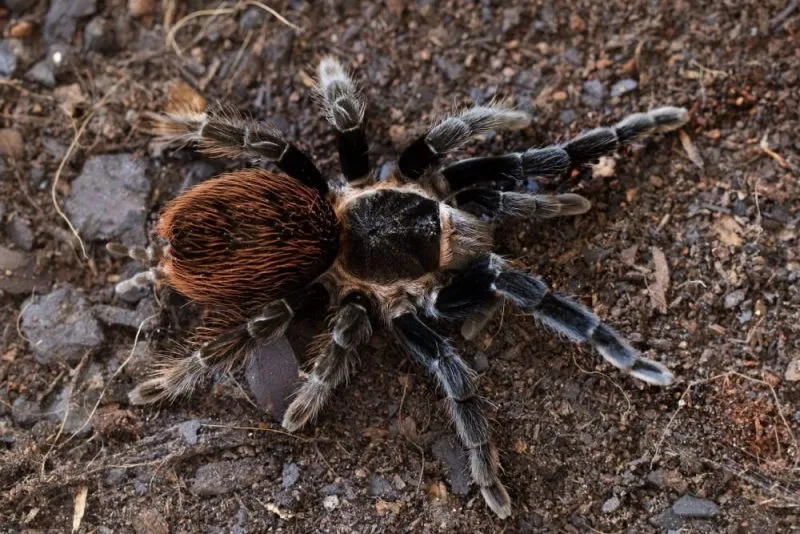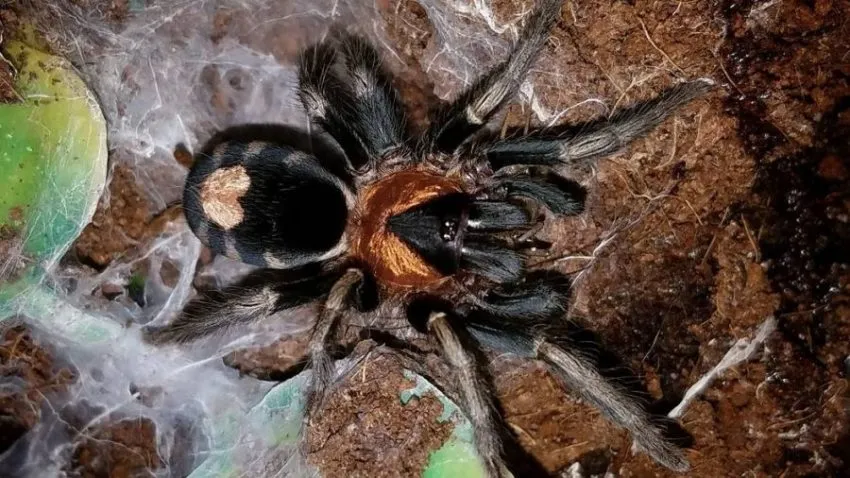Tarantula Farming How to Breed Tarantulas
Breeding tarantulas can be a fascinating endeavor, offering a unique opportunity to witness the complete lifecycle of these intriguing creatures. However, it’s not a task to be taken lightly. Success in tarantula breeding requires careful planning, a thorough understanding of tarantula behavior, and a commitment to providing the ideal conditions for reproduction. This comprehensive guide will walk you through every step of the process, from selecting the right species and setting up the perfect environment to managing the egg sac and caring for the spiderlings. By following these guidelines, you can increase your chances of successfully breeding tarantulas and contribute to the sustainable hobby of tarantula farming. Remember, patience and attention to detail are key. Good luck, and enjoy the journey into the captivating world of tarantula breeding.
Choosing the Right Tarantula Species for Breeding
The first and arguably most crucial step in breeding tarantulas is selecting the right species. Not all tarantulas are created equal when it comes to ease of breeding and availability. Some species are notoriously difficult to breed in captivity, while others are relatively prolific. Consider the following factors when making your decision. Beginner-friendly species are often a good starting point for those new to tarantula breeding. They tend to be more adaptable to variations in environmental conditions and less prone to complications during the breeding process. Also, think about the availability of the species. Research the market to ensure you can acquire a healthy breeding pair. Popular species are often easier to find and may come with more readily available information on breeding techniques. Finally, your personal interest in the species is important. You’ll be investing significant time and effort, so choose a species that captivates you.
Species Considerations

When considering different species, think about their natural behaviors. Some tarantulas are more docile and tolerant of handling, which can be an advantage during breeding. For instance, the Grammostola genus, including the Chilean rose tarantula, are known for their relatively gentle temperament. Research the specific requirements of each species you are considering. This includes their preferred temperature, humidity levels, and dietary needs. Species native to warmer climates will have different requirements than those from cooler regions. Some species may require specific triggers, such as a change in the photoperiod or a simulated rainy season, to induce breeding behavior. Ensure you can replicate these conditions in your captive environment. Certain species are known for their aggressive tendencies, especially females. This can make the breeding process more challenging and potentially dangerous. Always prioritize your safety and the well-being of the tarantulas.
Legal Regulations
Before you acquire any tarantulas for breeding, research the local laws and regulations regarding exotic animal ownership. Some regions may have restrictions on the import, ownership, or breeding of certain tarantula species. You may need to obtain permits or licenses to legally breed tarantulas in your area. Failure to comply with these regulations can result in fines or even the confiscation of your animals. Be aware of any international laws, such as CITES (Convention on International Trade in Endangered Species), which regulates the trade of endangered species, including some tarantulas. If you plan to sell or trade tarantulas, you’ll need to be particularly vigilant about compliance with all relevant regulations. Ignorance of the law is not an excuse; therefore, familiarize yourself with all the legal requirements before starting your tarantula farming journey.
Preparing the Breeding Environment
Creating the perfect breeding environment is essential for encouraging successful mating and raising healthy offspring. The ideal environment should mimic the tarantulas’ natural habitat as closely as possible. This includes maintaining the correct temperature, humidity, and providing a suitable enclosure setup. Remember that the welfare of the tarantulas is paramount. A well-prepared environment not only increases the chances of successful breeding but also ensures the health and well-being of the spiders involved. Paying attention to detail, from the substrate to the ventilation, can make a significant difference. The investment in time and resources spent on the environment will be repaid through healthier tarantulas and a higher likelihood of successful breeding outcomes. The goal is to create a comfortable and safe space that encourages natural behaviors, and reduces stress.
Optimal Temperature and Humidity

Temperature and humidity are two of the most critical environmental factors to control. The ideal temperature range varies depending on the species, but generally, tarantulas thrive in temperatures between 75°F and 85°F (24°C and 29°C). Use a reliable thermometer to monitor the temperature and adjust heating sources, if needed. Many tarantula keepers use a heat mat or a ceramic heat emitter to maintain the correct temperature, but be careful to avoid overheating the enclosure. Humidity levels should also be carefully monitored and controlled. Most species thrive in humidity levels between 60% and 80%. Use a hygrometer to measure humidity and adjust the moisture levels by misting the enclosure with water or providing a water dish. Poor temperature or humidity control can lead to health problems, such as molting issues or dehydration, and can also negatively impact breeding success. Regular monitoring and adjustment of both temperature and humidity are vital for maintaining a healthy breeding environment.
Enclosure Setup for Breeding
The enclosure should be spacious enough to accommodate the tarantula and provide adequate space for movement and activity. The size requirements vary depending on the species and the size of the tarantula, but as a general rule, the enclosure should be at least three times the tarantula’s leg span in width and length. Provide a substrate that is suitable for burrowing, such as a mixture of peat moss, vermiculite, and coconut fiber. The substrate should be deep enough to allow the tarantula to dig a burrow if it chooses. Include a water dish that is easily accessible and shallow enough to prevent the tarantula from drowning. Provide hiding places, such as cork bark, artificial plants, or sturdy decorations, to allow the tarantula to feel secure. Ensure proper ventilation to prevent the buildup of harmful gases and to regulate humidity levels. Avoid using sharp or dangerous objects that could injure the tarantula. The enclosure should be secure to prevent escape and provide a safe and comfortable environment for breeding.
Identifying Mature Tarantulas
Before attempting to breed tarantulas, it’s essential to determine if they are sexually mature. Mating immature tarantulas can be unproductive and potentially dangerous for the spiders. Recognizing maturity in both males and females requires careful observation and understanding of the species-specific characteristics. Maturity signs vary among species, but there are several general indicators to look for. Always err on the side of caution and wait until you are confident that both tarantulas are mature. Take detailed notes of the tarantulas’ molting history, feeding habits, and overall health. Keeping accurate records can help you monitor their development and determine when they are ready for breeding. Patience and careful observation are crucial when determining the maturity of tarantulas.
Recognizing Maturity in Males

Male tarantulas undergo a final molt, after which they develop several key features that indicate sexual maturity. One of the most obvious signs is the presence of ‘boxing gloves’ or ‘palpal bulbs’ on their pedipalps (the small leg-like appendages near their mouths). These bulbs are used to store sperm. Look closely at the pedipalps under magnification or with a bright light to identify these structures. Additionally, mature males typically have hooked tibial spurs on their front legs, which they use to hold the female’s fangs during mating to prevent her from attacking. These spurs are a reliable indicator of maturity in most species. A mature male may also exhibit changes in behavior, such as restlessness or increased wandering. They may also begin to construct sperm webs, which are small webs where they deposit their sperm before collecting it with their palpal bulbs. Be aware that the timing of maturity varies depending on the species, with some maturing in a few years while others take much longer.
Recognizing Maturity in Females
Determining the maturity of a female tarantula can be more challenging. Unlike males, females do not undergo a final molt. The most reliable indicator of maturity is the presence of an epigastric furrow, a small, crescent-shaped structure on the underside of the abdomen. This furrow contains the spermathecae, the organs where the female stores the sperm. You may need a magnifying glass and a bright light to clearly see this feature. Another indication of maturity is the female’s size and overall appearance. Mature females are typically larger and have a more robust build. Consider the tarantula’s age and molting history. Keep a detailed record of each molt, as this can help you estimate their age and growth rate. While there is no definitive age at which females reach maturity, they typically mature after several years. A well-fed female that has reached a suitable size and displays the proper characteristics is usually mature enough for breeding.
The Breeding Process
Once you’ve confirmed that both the male and female tarantulas are mature, you can begin the breeding process. This requires careful planning, observation, and a degree of patience. The process involves introducing the male to the female’s enclosure, monitoring their behavior, and intervening if necessary. It’s crucial to provide a safe and controlled environment to minimize the risk of injury to either spider. Be prepared to separate the spiders immediately if the mating attempt fails or if the female shows signs of aggression. Record all observations, as they can provide valuable insights into the behavior of the species and help you improve future breeding attempts. Remember that breeding is not always guaranteed, and multiple attempts may be needed before a successful mating occurs. The well-being of the tarantulas should always be the priority, so proceed with caution.
Introducing the Tarantulas

The introduction should be done cautiously. It’s generally recommended to introduce the male to the female’s enclosure, as the female is usually more territorial. Place the female in her established enclosure to minimize stress. Before introducing the male, make sure the female has been well-fed. A full female is less likely to see the male as a meal. Gently introduce the male into the female’s enclosure while closely observing their behavior. It is a good practice to use a long pair of tongs to gently guide the male. Be prepared to intervene if the female shows aggression immediately. Some males will attempt to mate right away, while others may take some time to approach the female. Observe the spiders’ behavior carefully. The male will often drum on the substrate to signal his presence and intentions. If the female is receptive, she may allow the male to approach. If she is not receptive, she may retreat or attack the male. The length of time the spiders spend together can vary. Some matings are quick, while others may last for several hours or even days.
Mating and Post-Mating Behavior
If the female is receptive, the male will approach her and attempt to mate. He may use his tibial spurs to hold her fangs away from him during mating, which can be a delicate process. The male will insert his palpal bulbs into the female’s epigastric furrow to transfer his sperm. Mating can last from a few minutes to several hours, depending on the species and the individual spiders. After mating, it’s crucial to separate the spiders to prevent the female from attacking and potentially killing the male. Carefully remove the male from the enclosure using tongs or a cup. Observe the female’s behavior in the days and weeks following mating. A successful mating may result in a gravid female. The female will begin to show signs of pregnancy. She may become more reclusive, and her abdomen may appear larger. After a few months, the female will typically lay an egg sac. Prepare for the next stages, including caring for the gravid female and managing the egg sac.
Caring for the Gravid Female
Once a female has mated and is carrying eggs, her care needs to be adjusted to ensure the health of both her and the developing eggs. The gravid female will have increased nutritional requirements. Continue to offer her a varied diet of appropriately sized insects. Increase the frequency of feeding, as the female needs more resources to support her eggs. Maintain the proper temperature and humidity levels, as any environmental stress can affect the eggs’ development. Make sure the enclosure is clean and free of any potential hazards. Avoid disturbing the female or her enclosure unnecessarily, as stress can cause her to abandon or consume her eggs. Provide a shallow dish of fresh water at all times. Monitor her behavior and appearance for any signs of problems. A healthy gravid female is more likely to produce a viable egg sac and healthy spiderlings. Be prepared to provide specialized care for the egg sac and, later, for the spiderlings. The attention you give the female during this period will dramatically influence the outcome.
Providing Proper Nutrition

The female’s dietary needs increase significantly during gestation. Offer a variety of appropriately sized insects, such as crickets, roaches, or mealworms. Choose insects that are smaller than the tarantula’s body size to prevent injury to the tarantula. Feed her regularly, typically 2-3 times a week. This ensures she has the energy and nutrients needed to produce healthy eggs. Ensure the insects are gut-loaded before feeding them to the tarantula. Gut-loading involves feeding the insects a nutritious diet, which passes essential nutrients to the tarantula. Provide a calcium supplement to the insects to help support the female’s health and the development of the eggs. Remove uneaten insects promptly to prevent them from stressing the female or potentially harming the eggs. Monitor the female’s body condition, and adjust the feeding frequency and amount as needed. It’s crucial to strike the right balance, as overfeeding can lead to health problems, while underfeeding can compromise the development of the eggs.
Maintaining the Enclosure
Maintaining a clean and stable enclosure is essential for the well-being of the gravid female. Remove any uneaten food or waste promptly. This reduces the risk of disease and parasites. Regularly mist the enclosure with water to maintain the appropriate humidity levels. However, avoid over-misting, as excessive moisture can lead to mold or other problems. Ensure proper ventilation to prevent the buildup of harmful gases and to regulate humidity levels. Keep the enclosure at a consistent temperature. Avoid sudden temperature fluctuations, which can stress the female and harm the eggs. Minimize disturbances to the enclosure. Avoid unnecessary handling or moving of the enclosure. Provide ample hiding places and a secure environment. Regularly inspect the substrate for any signs of mold or mites. Replace the substrate if necessary. A clean and stable environment contributes to the female’s health and the successful development of the eggs. Consistent care and attention to detail will help ensure the best possible outcome.
Egg Sac Management and Spiderling Care
Once the female lays the egg sac, you’ll need to make several critical decisions. This involves the handling of the egg sac, the incubation process, and the initial care of the spiderlings. These steps require specialized knowledge and equipment. The goal is to provide the ideal conditions for the eggs to hatch and the spiderlings to thrive. This phase is one of the most rewarding parts of tarantula farming, as you witness the beginning of a new generation. Careful planning and attention to detail are essential for successful egg sac management and spiderling care. Be prepared to adapt to any challenges that arise and to provide the best possible care for the young tarantulas. Learning and adapting are key to ensure the spiderlings’ health and survival.
Handling the Egg Sac

Handling the egg sac should be done with extreme care and caution. Once the female has laid the egg sac, decide whether to remove it from her enclosure. Some breeders prefer to leave the egg sac with the female, allowing her to care for it, but this can be risky, as the female may accidentally damage or consume the eggs. If you choose to remove the egg sac, do so gently. Carefully remove the egg sac from the enclosure using a soft brush or spoon. Handle the egg sac as little as possible. Place the egg sac in an incubator or a separate container. Maintain the appropriate temperature and humidity levels for the species. Regularly inspect the egg sac for any signs of mold or other problems. The eggs should be a healthy color, typically pale yellow or cream. Monitor the egg sac for signs of hatching, such as small spiderlings visible through the silk. Be prepared to provide the spiderlings with appropriate care once they hatch. Remember, any disruption to the egg sac during incubation can be detrimental, so proceed with caution and gentle handling.
Caring for Spiderlings
Once the spiderlings hatch, they require specialized care to survive. Spiderlings are very small and fragile, so their care needs to be very specific. House the spiderlings in a separate container or enclosure. The size of the container should be appropriate for the number of spiderlings. Provide a shallow water dish and appropriate substrate. Offer small prey items, such as fruit flies or pinhead crickets. Feed the spiderlings regularly, typically every other day. Ensure that the prey items are small enough for the spiderlings to consume. Maintain the appropriate temperature and humidity levels. Monitor the spiderlings for any signs of health problems. Keep the enclosure clean. As the spiderlings grow, gradually increase the size of the prey and the size of the enclosure. Provide individual enclosures once the spiderlings reach a certain size, usually after the first or second molt. Spiderling care requires a significant investment of time and resources. The goal is to provide a safe and healthy environment to allow the spiderlings to grow and thrive. Regular observation and diligent care are crucial for success.
Common Challenges in Tarantula Breeding
Despite your best efforts, you may encounter various challenges in tarantula breeding. These challenges can range from failed mating attempts to health issues in the tarantulas. Understanding these challenges can help you prepare for potential problems and adapt your approach. Remember that not every breeding attempt will be successful, and setbacks are a part of the process. Maintain meticulous records of your breeding attempts, including environmental conditions, spider behavior, and any interventions you make. The knowledge gained from these challenges will make you a better breeder. The key is to learn from your mistakes and adapt your strategies for future breeding attempts.
Failed Mating Attempts

Failed mating attempts are a common occurrence in tarantula breeding. Several factors can contribute to this outcome. The female may be unreceptive or may simply reject the male. The male may not be mature or may lack the necessary mating experience. Environmental factors, such as improper temperature or humidity, can also affect mating behavior. If the mating attempt fails, carefully separate the spiders and try again at a later date. Ensure that all environmental conditions are optimal and that both spiders are healthy and well-fed. Observe the spiders’ behavior carefully. Note any factors that may have contributed to the failure, such as the female’s reaction to the male or any disruptions during the mating attempt. Sometimes, it is a matter of waiting for the right timing, so be patient. Successful tarantula breeding can take several attempts.
Female Aggression
Female aggression poses a significant risk to the male during mating. If the female is not receptive or feels threatened, she may attack and kill the male. There are certain species of tarantulas that are known for their aggression, which is a factor to consider when selecting a breeding pair. To minimize the risk, ensure the female is well-fed and not stressed. Monitor the spiders’ behavior closely during the mating attempt and be prepared to intervene immediately if the female shows aggression. If the female attacks the male, gently separate them using tongs or a cup. Do not risk your safety. If the male survives the attack, you can try mating again at a later date. Careful observation, careful planning, and quick intervention can reduce this risk, but it is important to remember that some loss is unavoidable in tarantula breeding. Choose a species that fits your experience level and comfort with the inherent risks.
Parasites and Diseases
Tarantulas, like any other living organism, are susceptible to parasites and diseases. The most common parasites are mites, which can infest the tarantula’s body and enclosure. Diseases can include fungal infections, bacterial infections, and viral infections. Inspect the tarantulas regularly for any signs of parasites or diseases, such as unusual behavior, discoloration, or lesions. Quarantine any sick tarantulas to prevent the spread of infection. Maintain a clean environment. Regular cleaning and substrate replacement can help prevent the buildup of parasites and diseases. Provide a balanced diet and proper care to keep the tarantulas healthy. Seek veterinary assistance if necessary. A qualified veterinarian can diagnose and treat any health problems. Maintaining a healthy environment for the tarantulas is crucial to avoid parasites and diseases, allowing them to live their best life.
Conclusion
Breeding tarantulas can be a rewarding but demanding hobby. It requires a blend of scientific knowledge, observational skills, and patience. From choosing the right species to managing the egg sac and caring for the spiderlings, each step demands careful planning and diligent execution. Embrace the learning curve, take notes, and learn from your mistakes. Remember to prioritize the well-being of your tarantulas above all else. Always adhere to ethical practices and be aware of the legal regulations. By following the guidelines in this guide and continuing to learn and adapt, you can increase your chances of successfully breeding tarantulas and contributing to the fascinating world of arachnid husbandry. Breeding tarantulas can be a long-term commitment. With dedication and perseverance, you can find success and enjoy the unique experience of witnessing the full lifecycle of these amazing creatures. Good luck on your journey.
